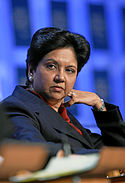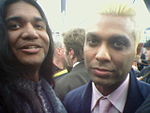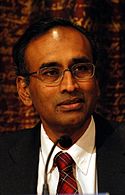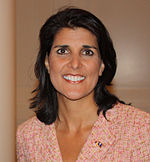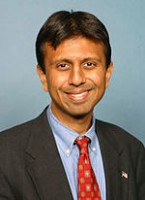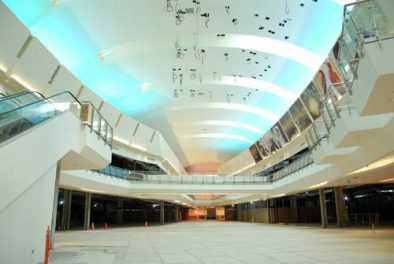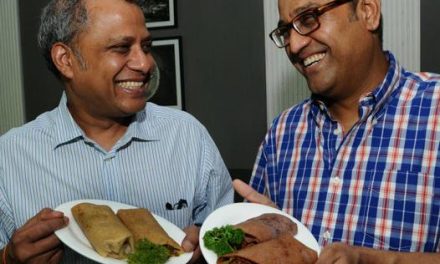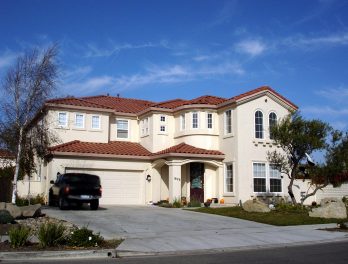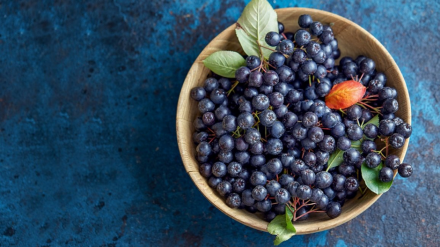Source: Wikipedia
According to the 2010 U.S. Census, the Asian Indian population in the United States grew from almost 1,678,765 in 2000 (0.6% of U.S. population) to 2,843,391 in 2010 (0.9% of U.S. population), a growth rate of 69.37%, one of the fastest growing ethnic groups in the United States.
The New York metropolitan area, consisting of New York City, Long Island, and adjacent areas within New York, as well as nearby areas within the states of New Jersey (extending to Trenton), Connecticut (extending to Bridgeport), and including Pike County, Pennsylvania, is home to approximately 557,000 Indian Americans as of the 2010 Census, comprising by far the largest Indian American population of any metropolitan area in the United States.
New York City itself contains the highest Indian American population of any city proper, at approximately 195,000. As of June 2011, Indian airline carriers Air India and Jet Airways as well as United States airline carrier Continental Airlines
were all offering flights from the New York City Metropolitan Area to and from India. At least twenty Indian American enclaves characterized as a Little India have emerged in the New York City Metropolitan Area.
Other metropolitan areas with large Indian American populations include Atlanta, Baltimore–Washington, Boston, Chicago, Dallas – Ft. Worth, Detroit, Houston, Los Angeles, Philadelphia, and San Francisco – San Jose – Oakland.
Education
Indians, along with other Asians, have one of the highest educational levels of all ethnic groups in the U.S. Almost 67% of all Indians have a bachelor’s or high degree (compared to 28% nationally and 44% average for all Asian American groups). Almost 40% of all Indians in the United States have a master’s, doctorate or other professional degree, which is five times the national average.
Economics
Main article: Model minority
According to the 2010 U.S. Census, Indian Americans had the highest household income of all ethnic groups in the United States.
According to the American Association of Physicians of Indian Origin, there are close to 35,000 Indian American doctors.[23]
Among Indian Americans, 72.3% participate in the U.S. work force, of which 57.7% are employed in managerial and professional specialties.[24]
In 2002, there were over 223,000 Asian Indian-owned firms in the U.S., employing more than 610,000 workers, and generating more than $88 billion in revenue.
Entertainment
Hindi radio stations are available in areas with high Indian populations, for example, Easy96 Radio in the New York tri – state areas, KLOK 1170 AM IN San Francisco, RBC Radio; Radio Humsafar, Desi Junction in Chicago; Radio Salaam Namaste in Dallas; and FunAsia Radio, Sangeet Radio and Radio Naya Andaz in Houston. There are also some radio stations broadcasting in Tamil and Telugu within these communities.[31][32]. Houston based Kannada Kaaranji radio focuses on a multitude of programs for children and adults.[33]
South Asian magazine, SBR MAGAZINE(Style & Beauty Resource – Previously known as “Sabse Bada Rupaiya Magazine”) , one of the world’s leading publications, offers readers a print and online magazine filled with various beauty, health, fashion, and entertainment news and updates targeted to the young professionals in the Indian community nationwide.
Several cable and satellite providers offer Indian channels: Sony TV, Zee TV, Star Plus, Sahara One, Colors, regional channels, and others have offered Indian content for subscription, such as the Cricket World Cup.
Many metropolitan areas with large Indian-American populations now have movie theaters which specialize in showing
Indian movies, especially Bollywood. Silicon Valley, for example has two such multiplexes: one in Fremont and one in San Jose.
In July 2005, MTV premiered a spin-off network called MTV Desi which targets Indian Americans.[34] It has been discontinued by MTV.
Religion
Communities of Hindus, Sikhs, Jains, Buddhists, Muslims, Christians, Parsis, and Jews from India have established their religions in the United States.
The first religious centre of an Indian religion to be established in the US was a Sikh Gurudwara in Stockton, California in 1912. Today there are many Sikh Gurudwaras, Hindu, Buddhist and Jain Temples in all the 50 states. As of 2008, the American Hindu population was around 2.2 million,[35] and Hindus are the majority of Indian Americans.[36][37] Many sects such as ISKCON, Swaminarayan Sampraday, BAPS Swaminarayan Sanstha, Chinmaya Mission, and Swadhyay Pariwar are well-established in the U.S. The Hindu Americans have formed the Hindu American Foundation which is represents American Hindus and aims to educate people about Hinduism.
Swami Vivekananda brought Hinduism to the West at the 1893 Parliament of the World’s Religions.[38] The Vedanta Society has been important in subsequent Parliaments. Today, many Hindu temples, most of them built by Indian Americans have emerged in different cities and towns of America.[39][40] More than 18 million Americans are now practicing some form of Yoga. Kriya Yoga was introduced to America by Paramahansa Yogananda. In addition, A.C Bhaktivedanta Swami Prabhupada initiated a popular ISKCON also known as Hare Krishna movement while preaching Bhakti yoga.
Indian Muslim Americans generally congregate with other American Muslims, including those from Pakistan and Bangladesh, but there are prominent organizations such as the Indian Muslim Council – USA.[41]
Adherents of Jainism first arrived in the United States in the 20th century. The most significant time of Jain immigration was in the early 1970s. The United States has since become a center of the Jain Diaspora. The Federation of Jain
Associations in North America is an umbrella organization of local American and Canadian Jain congregations to preserve, practice, and promote Jainism and the Jain Way of Life.[42]
There are many Indian Christian churches across the US; Syro-Malabar Catholic Church, Syro-Malankara Catholic Church, Knanaya, Indian Orthodox Church, Mar Thoma Church (reformed orthodox), Malankara Syriac Orthodox Church, Church of South India, Church of North India, The Pentecostal Mission, and the India Pentecostal Church of God; there are also a number of Indian Christians in mainstream American churches.[43] The Indian Christian Americans have formed the Federation of Indian American Christian Organizations of North America (FIACONA) to represent a network of Indian Christian Organizations in the United States and Canada. FIACONA estimates the Indian American Christian population to be 600,000.[44]
The large Parsi community is represented by the Federation of Zoroastrian Associations of North America.[45] Indian Jews are perhaps the smallest organized religious group among Indian Americans, consisting of approximately 350 members in the United States. They form the Indian Jewish Congregation of USA with headquarters in New York City.[46]
Ethnicity
Like the terms “Asian American” or “South Asian American”, the term “Indian American” is also an umbrella label applying to a variety of views, values, lifestyles, and appearances. Although Asian-Indian Americans retain a high ethnic identity, they are known to assimilate into American culture while at the same time keeping the culture of their ancestors.[47] They may assimilate more easily than many other immigrant groups because they have fewer language barriers (English is widely spoken in India among professional classes), more educational credentials (Indian immigrants are disproportionately well-educated), and come from a democratic society. Additionally, Indian culture, like many other Asian cultures, puts emphasis upon achievement and personal responsibility of the individual as a reflection upon the family and community.
In countries such as the United States, Canada, and until more recently, Britain, there has been a large influx of Indian immigrants, beginning in the late 1960s. As a result of assimilation, mixed Caucasian and Indian backgrounds are becoming more prevalent. The 2001 U.S. Census Bureau’s publication of the 56,497,000 marriedcouples, shows that
overall the percentage of Indian males married to White females (7.1%) was higher than Indian females marrying with White males (3.7%); whilst for those who were US born the reverse was true with more Indian females marrying with White males (39.1%) than Indian males married to White females (27.3%).[48]
The United States is also home to associations of Indians united by ethno-linguistic affiliation. The big organizations include Cultural Association of Bengal and their annually sponsored event the North American Bengali Conference, AKKA (Association of Kannada Kootas of America), Kannada Sangha and Kannada Koota, Telugu Association of North America TANA, Orissa Society of the Americas, Brihan Maharashtra Mandals of North America (BMM), Federation of Tamil Sangams of North America, Boston Thamil Association, Tamil sangam of Greater Washington Inc,New Jersy Tamil Sangam, Tamil Sangam of Carolina, Inc, Gujarati Samaj, Pravasi Federation of Kerala, Associations of North America (FOKANA), Punjabi American Heritage Society and Punjabi-American Cultural Association. These associations generally put on cultural programs, plays, and concerts during the major Hindu festivals (Diwali, Ganesh Chaturthi, Padva, Pongal, Sankranti, Ugadi, Baisakh, Onam, Vishu) and other religious (e.g., Christian) and cultural events such as Christmas and New Years.
Immigration Timeline
- 1600s: The East India Company brought over Indian indentured servants to the British American colonies.[49]
- 1680: Due to anti-miscegenation laws, a Eurasian daughter born to an Indian father and Irish mother in Maryland was classified as a “mulatto” and sold into slavery.[49]
- 1790: Following American independence from the British, Indian immigrants began entering the independent United States as maritime workers.
- 1838: (May 5) – First two ships arrive in the Caribbean with Indian indentured workers (landing in British Guiana).
- 1899–1914: First significant wave of Indian immigrants, mostly Sikh farmers and laborers from Punjab region of British India, start arriving in California (Angel Island) on ships via Hong Kong. They find employment on farms and in lumber mills in California, Oregon and Washington states.
- 1912: The first Sikh temple opens its doors in Stockton, California.
- 1913: A.K. Mozumdar became the first Indian-born person to earn U.S. citizenship, having convinced the Spokane district judge that he was “Caucasian” and met the requirements of naturalization law that restricted citizenship to free white persons. In 1923, as a result of a U.S. Supreme Court decision that no person of East Indian origin could become a naturalized American citizen, his citizenship was revoked.
- 1917: The Barred Zone Act passes in Congress through two-thirds majority, overriding President Woodrow Wilson‘s earlier veto. Asians, including Indians, are barred from immigrating to the U.S.
- 1918: Due to anti-miscegenation laws, there was significant controversy in Arizona when an Indian farmer B. K. Singh married the sixteen year-old daughter of one of his white American tenants.[50]
- 1918: Bhagat Singh Thind becomes the first person of East-Indian descent recruited by the US Army on July 22, 1918. He goes on to fight in World War I. A few months later, on November 8, 1918, Bhagat Singh was promoted to the rank of an Acting Sergeant.
- 1922: Yellapragada Subbarao arrived in Boston on 26 October 1922. He discovered the role of Phosphocreatine and Adenosine Triphosphate (ATP) in muscular activity, which earned him an entry into biochemistry textbooks in the 1930s. He obtained his Ph.D. degree the same year.
- 1923: The US Supreme Court rules that people from India (at the time, British India, e.g. South Asians) are aliens ineligible for citizenship in United States v. Bhagat Singh Thind. Bhagat Singh Thind becomes a citizen a few years later in New York – he had earlier applied and been rejected in Oregon.[51]
- 1928: Dhan Gopal Mukerji wins the Newbery Medal, and thus becomes the first successful India-born man of letters in the United States.
- 1943: Republican Clara Booth Luce and Democrat Emanuel Celler introduce a bill to open naturalization to Indian immigrants to the US. Prominent Americans Pearl Buck, Louis Fischer, Albert Einstein and Robert Millikan give their endorsement to the bill. President Franklin Roosevelt also endorses the bill, calling for an end to the “statutory discrimination against the Indians”.
- 1946: President Harry Truman signs into law the Luce-Celler Act of 1946, returning to Indian Americans the right to immigrate and naturalize.
- 1956: Dalip Singh Saund elected to the US House of Representatives from California. He was re-elected to a 2nd and 3rd term, winning over 60% of the votes. He is also the first Asian immigrant to be elected to Congress.
- 1962: Zubin Mehta appointed music director of the Los Angeles Philharmonic, becoming the first person of Indian origin to become the principal conductor of a major American orchestra. Subsequently he was appointed principal conductor of the New York Philharmonic.
- 1964: Amar G. Bose founded Bose Corporation. He is the Chairman, primary stockholder, and also holds the title of Technical Director at Bose Corporation. He was former professor of electrical engineering at Massachusetts Institute of Technology.
- 1965: President Lyndon Johnson signs the INS Act of 1965 into law, eliminating per-country immigration quotas and introducing immigration on the basis of professional experience and education. Dr. Satinder Mullick, Ph.D. Johns Hopkins University, is one of the first to immigrate under the new law in November 1965—sponsored by Corning Glass Works Corning Inc..
- 1981: Suhas Patil co-founded Cirrus Logic, one of the first fabless semiconductor companies.
- 1982: Vinod Khosla co-founded Sun Microsystems.
- 1983: Asian Indian Women in America[52] attended the first White House Briefing for Asian American Women. (AAIWA, formed in 1980, is the 1st Indian women’s organization in North America.)
- 1987: President Ronald Reagan appoints Dr. Joy Cherian, the first Indian Commissioner of the United States Equal Employment Opportunity Commission (EEOC).
- 1988: Sanjay Mehrotra co-founded SanDisk.
- 1989: Rohit Jagessar founded RBC Radio, the first Asian Indian radio station in the US.
- 1994: Rajat Gupta elected managing director of McKinsey & Company, the first Indian-born CEO of a multinational company.
- 1994: Guitarist Kim Thayil, of Indian origin, wins Grammy award for his Indian inspired guitarwork on the album Superunknown by his band Soundgarden.
- 1994: Raj Reddy received the ACM Turing Award (with Edward Feigenbaum) “For pioneering the design and construction of large scale artificial intelligence systems, demonstrating the practical importance and potential commercial impact of artificial intelligence technology”.
- 1996: Pradeep Sindhu co-founded Juniper Networks
- 1996: Rajat Gupta and Anil Kumar of McKinsey & Company co-found the Indian School of Business.
- 1997: Kalpana Chawla, one of the six-member crew of STS-87 mission, becomes the first Indian American astronaut.
- 1999: NASA names the third of its four “Great Observatories” Chandra X-ray Observatory after Subrahmanyan Chandrasekhar the Indian-born American astrophysicist and a Nobel laureate.
- 1999: Filmmaker M. Night Shyamalan enters film history with his film The Sixth Sense becoming one of the all-time highest-grossing films, worldwide.
- 1999: Rono Dutta becomes the President of United Airlines.
- 2001: Professor Dipak C. Jain (born in Tezpur – Assam, India) appointed as dean of the Kellogg School of Management, Northwestern University. He is the Sandy and Morton Goldman Professor in Entrepreneurial Studies and a professor of marketing at the Kellogg School of Management, where he has been a member of the faculty since 1987.
- 2002: Professor Calyampudi Radhakrishna Rao — ‘the world renowned statistician’ is awarded National Medal of Science by President George W. Bush.
- 2005: Abhijit Y. Talwalkar, President and Chief Executive Officer of LSI Corporation
- 2006: Indra Nooyi (born in Chennai, India) appointed as CEO of PepsiCo. She is a Successor Fellow of the Yale Corporation — sometimes, and more formally, known as The President and Fellows of Yale College, is the governing body of Yale University in New Haven, Connecticut. She also serves as a member of the boards of the International Rescue Committee, Catalyst and the Lincoln Center for the Performing Arts, Trustees of Eisenhower Fellowships, and currently serves as Chairman of the U.S.–India Business Council.
- 2007: Bobby Jindal is elected governor of Louisiana and is the first person of Indian descent to be elected governor of an American state; he is inaugurated on January 14, 2008.
- 2007: Renu Khator appointed as the chancellor of the University of Houston System and the president of the University of Houston on October 15, 2007.
- 2007: Francisco D’Souza appointed as the President and Chief Executive Officer and a member of the Board of Directors of Cognizant Technology Solutions. He is one of the youngest Chief Executive Officers in the software services sector at the age 38 in the United States. He was part of the team founded, in 1994, the Nasdaq-100 Cognizant Technology Solutions.
- 2007: Vikram Pandit (born in Maharashtra, India) appointed as CEO of Citigroup. He was previously the President and Chief Operating Officer of the Institutional Securities and Investment Banking Group at Morgan Stanley. He also serves on the boards of Columbia University, Columbia Business School, the Indian School of Business and The Trinity School. He is a former board member of NASDAQ (2000–2003), the New York City Investment Fund.
- 2007: Shantanu Narayen appointed as CEO of Adobe Systems.
- 2008: Treasury Secretary Henry Paulson appoints Neel Kashkari as the Interim U.S. Assistant Secretary of the Treasury for Financial Stability.
- 2008: Raj Chetty appointed as professor of economics at Harvard University. As of today, he is the youngest person ‘at the age of 29’ to ever receive tenure of professorship in the Department of Economics at Harvard. He is one of the top 8 young economists in the world.
- 2008: Sanjay Jha appointed as Co-CEO of Motorola, Inc..
- 2008: Establishment of the South Asian American Digital Archive (SAADA) to document the history of the South Asian American community.[53]
- 2009: President Barack Obama appoints Preetinder S. Bharara (born in Firozpur, India; graduate of Harvard College Class of 1990 and Columbia Law School Class of 1993) as United States attorney for the Southern District of New York Manhattan.
- Farah Pandith appointed as Special Representative to Muslim Communities for the United States Department of State.
- 2009: President Barack Obama appoints Eboo Patel and Anju Bhargava on President’s Advisory Council on Faith Based and Neighborhood Parnerships.
- 2009: President Barack Obama appoints Vinai Thummalapally as the U.S. Ambassador to Belize
- 2009: President Barack Obama nominates Rajiv Shah, M.D. as the new head of United States Agency for International Development.
- 2009: President Barack Obama nominates Islam A. Siddiqui as the Chief Agricultural Negotiator in the Office of the U.S. Trade Representative.
- 2010: President of Harvard University Catherine Drew Gilpin Faust appoints Nitin Nohria as the 10th dean of Harvard Business School.
- 2010: President of University of Chicago Robert Zimmer appoints Sunil Kumar as the dean of University of Chicago Booth School of Business.
- 2010: Deven Sharma appointed President of Standard & Poor’s.
- 2010: Ajaypal Banga appointed President and CEO of MasterCard.
- 2010: Year marks the most number of candidates of Indian origin, running for political offices in the United States, including candidates such as Kamala Harris and Ami Bera.
- 2010: State Senator Nikki Haley is elected governor of South Carolina, and becomes the first Indian American woman, and second Indian American in general to become Governor of an American state.
- 2011: Jamshed Bharucha (born in Mumbai) named President of Cooper Union.[54] He was formerly Dean of the Faculty of Arts & Sciences at Dartmouth College and Provost at Tufts University.
- 2011: Satish K. Tripathi appointed as President of University at Buffalo, The State University of New York.
Notable Asian Indians
Academics
President or Dean
- Satish K. Tripathi, President of University at Buffalo
- S. Shankar. Sastry, Dean of College of Engineering at University of California Berkeley [1]
- Renu Khator, Chancellor of the University of Houston System and President of the University of Houston
- Beheruz Sethna, President of the University of West Georgia
- Molly Easo Smith, President of Manhattanville College
- Nitin Nohria, Dean of Harvard Business School
- Vijay K. Dhir, Dean of the UCLA Henry Samueli School of Engineering and Applied Science
- Pradeep Khosla, Dean of Carnegie Institute of Technology, Carnegie Mellon University
- Vijay Kumar (roboticist), Associate Dean of School of Engineering and Applied Science at University of Pennsylvania[2]
- Dipak C. Jain, Dean of INSEAD and former Dean of the Kellogg School of Management at Northwestern University
- Dinesh D’Souza, President of The King’s College
- Dr. Paul Shrivastava, Distinguished Professor and Director, David O’Brien Centre for Sustainable Enterprise, Concordia University
- Pramod P. Khargonekar, Dean of College of Engineering at University of Florida
- Jamshed Bharucha, President of Cooper Union.[3] Formerly Dean of the School of Arts & Sciences at Dartmouth College and Provost at Tufts University
- Venkatesh Narayanamurti, Formerly Dean of Engineering and Applied Sciences (2001–2009) at Harvard University.[4]
- S. Narayanan, Dean of College of Engineering and Computer Science at Wright State University [5]
- Beheruz Sethna, President of the University of West Georgia.
- Sunil Kumar, Dean of Booth School of Business at the University of Chicago
Professors
- Narayan Hosmane, Professor of Chemistry and Biochemistry at Northern Illinois University (winner of Humboldt Prize [twice] for Chemistry, [2001 & 2008]).
- Raghuram Rajan, Professor of Finance at the Booth School of Business at the University of Chicago; also International Monetary Fund Chief Economist (winner of Fischer Black Prize).
- Satya N. Atluri, Professor of Mechanical & Aerospace Engineering at University of California, Irvine
- Alok Bhargava, Professor of Economics at University of Houston
- Avinash Kamalakar Dixit, Professor of Economics at Princeton University
- Madhu Sudan, Professor of Computer Science at MIT (winner of the Rolf Nevanlinna Prize and Gödel Prize).
- Anant Agarwal, Professor of Electrical Engineering and Director of the Computer Science and Artificial Intelligence Laboratory MIT
- C. R. Rao, Professor at Penn State University and Research Professor at the University at Buffalo (awarded the National Medal of Science)
- Arogyaswami Paulraj, Professor of Electrical Engineering at Stanford University (awarded the Padma Bhushan by the Govt. of India)
- Ravindra Khattree, Professor of statistics at Oakland University
- Akhil Amar, Professor of Law at Yale Law School
- Salman Akhtar, Professor at the Jefferson Medical College
- Vikram Amar, Professor of Law at the University of California, Davis School of Law.
- P.S. Ayyaswamy, Professor of Dynamical Engineering at the University of Pennsylvania, Philadelphia, USA
- Homi K. Bhabha, Professor at Harvard University
- Sugata Bose, Professor of History Harvard University
- Raj Chetty, Professor of economics at Harvard University
- V.S. Ramachandran Professor with the Psychology and Neurosciences University of California San Diego
- Ananda Mohan Chakrabarty, Professor of microbiology at University of Illinois at Chicago
- Ashok Gadgil, Professor in civil and environmental engineering at the University of California, Berkeley
- K. Mani Chandy, Professor of Computer Science at the California Institute of Technology.
- Rakesh Jain, Professor of Tumor Biology at Massachusetts General Hospital in the Harvard Medical School
- Muzaffar Alam, Professor in South Asian Languages & Civilizations at University of Chicago.
- V. V. Chari, Professor of economics at the University of Minnesota.
- Aravind Joshi, Professor of Computer and Cognitive Science at the University of Pennsylvania
- Thomas Kailath, Professor of Engineering at Stanford University
- M. A. Muqtedar Khan, Associate Professor in the Department of Political Science and International Relations at the University of Delaware.
- Marti G. Subrahmanyam, Professor of Finance at the Stern School of Business at New York University.
- C.K. Prahalad, Professor of Corporate Strategy at the Stephen M. Ross School of Business in the University of Michigan
- Gayatri Chakravorty Spivak, Professor at Columbia University.
- Krishna Saraswat, Professor of electrical engineering at Stanford University.
- Arvind Panagariya, Professor of Economics at Columbia University
- Jagdish Natwarlal Bhagwati, Professor of economics at Columbia University.
- Abhay Ashtekar, Professor of Physics at Pennsylvania State University.
- Anirvan Ghosh, Professor at the University of California, San Diego
- Vijay Vazirani, Professor of Computer Science at Georgia Institute of Technology
- Aswath Damodaran, Professor of Finance at the Stern School of Business at New York University.
- Umesh Vazirani, Professor of Electrical Engineering and Computer Science at the University of California, Berkeley.
- Ashok Das, Professor of Physics at University of Rochester
- Jagdish Shukla, Professor at George Mason University
- Pulickel M. Ajayan, is a professor of Material Science at Rice University
- J. N. Reddy, Professor and holder of the Oscar S. Wyatt Endowed Chair in Mechanical Engineering at Texas A&M University.
- Jaishree Odin, Professor of post-modern literary theorist at the University of Hawaii
- Ravi Jagannathan, Professor at the Kellogg School of Management
- Vijay Prashad, Professor of International Studies at Trinity College.
- Mriganka Sur, Professor of Neuroscience at the Massachusetts Institute of Technology (MIT).
- Shrinivas Kulkarni, Professor of astrophysics and planetary science at Caltech.
- Nazir Jairazbhoy, Professor of folk and classical music of South Asia at University of California at Los Angeles.
- Avinash Kak, Professor of Electrical and Computer Engineering at Purdue University
- Ramesh Agarwal, William Palm Professor of Engineering at Washington University in St. Louis
- Ishwar K. Puri, N. Waldo Harrison Professor of Engineering Science and Mechanics at Virginia Tech
Scholarship
- Sanjay Subrahmanyam, holder of Navin and Pratima Doshi Chair of Indian History and scholar at UCLA.
- C. M. Naim, scholar of Urdu language and literature at University of Chicago
- Kausalya Hart, scholar of Tamil language at UC Berkeley
- Medha Yodh, scholar of classical Indian dance at UCLA
Military
- Uday Singh Taunque, first Indian American to die in Operation Iraqi Freedom
Mathematics
- S. R. Srinivasa Varadhan, NYU mathematician who specialised in probability, winner of the Abel Prize and Steele Prize.
- Shreeram Shankar Abhyankar, mathematician, singularity theory and Abhyankar’s conjecture of finite group theory
- Anil Nerode, mathematician, proved the Myhill-Nerode Theorem.
- Narendra Karmarkar, mathematician, inventor of Karmarkar algorithm.
- Chandrashekhar Khare, professor of mathematics at the University of California Los Angeles.
- Harish-Chandra, mathematician
- K. C. Sreedharan Pillai, mathematician
- Manjul Bhargava, is a professor of mathematics at Princeton University.
- Sarvadaman Chowla, mathematician specializing in number theory
- G. S. Maddala, mathematician and economist best known for his work in the field of econometrics.
Science and Technology
- Anita Goel: Dr. Anita Goel, MD, PhD is a Harvard-MIT Physicist- Physician, Globally recognized expert in Nanobiophysics and Nanotechnology; Chairman & CEO, Nanobiosym
- Avtar Saini : Co-led the development of the Pentium processor Intel. He holds 7 patents related to microprocessor design.
- Ajay Bhatt : Co-Inventor of the USB. Chief Client Platform Architect at Intel
- Anil Dash : Blogger and technologist
- Raj Reddy : Founder of the Robotics Institute at Carnegie Mellon University, winner of the Turing Award.
- Arun Netravali : Scientist. Former President of Bell Labs. Former CTO of Lucent. A pioneer of digital technology including HDTV and MPEG4.
- C. Kumar N. Patel : Developed the carbon dioxide laser, used as a cutting tool in surgery and industry.
- Khem Shahani : Microbiologist who conducted pioneer research on probiotics, he discovered the DDS-1 strain of Lactobacillus acidophilus
- Arjun Makhijani : Electrical and nuclear engineer who is President of the Institute for Energy and Environmental Research
- George Sudarshan : Physicist, author – first to propose the existence of Tachyon
- Kalpana Chawla : Female NASA Space Shuttle astronaut, and space shuttle mission specialist
- Jogesh Pati : Theoretical physicist at the University of Maryland, College Park.
- Krishan Sabnani : Engineer and Senior Vice President of the Networking Research Laboratory at Alcatel-Lucent Bell Labs in New Jersey
- Rajeev Motwani : Professor, Angel Investor.
- Subrah Iyar: Co-Founder and CEO of Webex Communications
- Pranav Mistry: Sixth Sense Project.[6]
- Sunita Williams : Female NASA astronaut
- Thomas Anantharaman : Computer statistician specializing in Bayesian inference
- Thomas Zacharia : Computational scientist
- Vijay Raghunath Pandharipande : Physicist
- Vilayanur S. Ramachandran : Behavioral neurologist and psychophysicist.
- Mahadev Satyanarayanan : Computer science professor at Carnegie Mellon University. Pioneered research in mobile and pervasive computing
- Mathukumalli Vidyasagar : Control Theorist
- Mani Lal Bhaumik : Contributor excimer laser technology.
- Narinder Singh Kapany : Engineer, called the “Father of Fiber Optics“.
- Om Malik : Technology journalist and blogger
- Pramod Khargonekar : Control Theorist, Dean and Eckis Professor, College of Engineering, University of Florida, Gainesville, Florida
- Vamsi Mootha : Physician-scientist and computational biologist
- Chitranjan Singh Ranawat : Eminent orthopaedic and knee surgeon
- Vineeta Rastogi : Public health worker
- Deepak Chopra : Medical doctor
- Noshir Gowadia : Design engineer
- Rangaswamy Srinivasan : in the Inventors’ Hall of Fame for pioneering work on excimer laser surgery.
- Siva S. Banda : Aerospace engineer and researcher, recipient of a Silver Medal from the Royal Aeronautical Society, a Presidential Rank Award, and elected to membership in the National Academy of Engineering
- Rajiv Dutta : Technology manager
- Subhash Kak : head of the Computer Science department at Oklahoma State University.
- Vinod Dham : Designed the Intel Pentium Chip Processor (Known as the Father of the “Pentium Chip”)
- Ajit Varki : Physician-scientist
- Amit Singhal : Google Fellow, the designation the company reserves for its elite master engineers in the area of “ranking algorithm”.
- Arvind Rajaraman : Theoretical physicist and string theorist
- Satya N. Atluri : Aerospace and mechanics
- Deepak Pandya : Neuroanatomist
- Krishna Bharat : Principal Scientist at Google – Famous for creating Google News.
- Pran Nath : is a theoretical physicist at Northeastern University.
- Sabeer Bhatia : Co-founder of Hotmail
- Sharmila Bhattacharya : Head of the Biomodel Performance and Behavior laboratory at NASA Ames Research Center.
- V. Mohan Reddy : World famous Paediatric Cardiothoracic Surgeon at Stanford
- Ashutosh Tewari : Professor of Urology at New York Presbyterian Hospital and noted prostate cancer surgeon.
- Ramesh K. Agarwal : Aviation Pioneer, William Palm Professor of Engineering at Washington University
Medicine
- Sanjay Gupta, Neurosurgeon & CNN chief medical correspondent, nominated for U.S. Surgeon General by President Barack Obama.
- Yellapragada Subbarao, Harvard doctor & scientist – discovered folic acid.
- Balamurali Ambati, physician, world’s youngest doctor at age 17.
- Paul Antony, MD, MPH is the Chief Medical Officer for the Pharmaceutical Research and Manufacturers of America (PhRMA).
- Rama P. Coomaraswamy, Cardiac surgeon
- E. Premkumar Reddy, World Famous Oncologist and Director of Fels institute of cancer research and molecular biology at Temple University.
- Atul Gawande, General and endocrine surgeon, professor, medical author, and National Book Award finalist.
- Amit Patel, Cardiovascular Surgeon and Stem Cell Researcher – First person to inject stem cells directly into the heart.
- Sangeeta Bhatia, Harvard-MIT doctor & scientist – engineer of artificial liver cells.
- Siddhartha Mukherjee Physician, scientist and writer, Pulitzer Prize for General Nonfiction (2011).
- Anita Goel, is a Harvard-MIT Physicist, Physician, Globally recognized expert in Nanobiophysics and Nanotechnology; Chairman & CEO, Nanobiosym; Inventor of the Gene-RADAR technology.
Musicians
- Kim Thayil, lead guitarist for Grammy Award-winning rock band Soundgarden.
- Norah Jones, (one-half Indian), musician, Grammy Award winner, daughter of Ravi Shankar.
- Tony Kanal, two-time Grammy Award winner, bass player for No Doubt.
- Sameer Bhattacharya, one of two guitarists in the Texas alternative rock band Flyleaf.
- Bizzy Bone, Rapper (one-quarter Indian), member of the Cleveland rap group Bone Thugs-n-Harmony.
- Ángel, is of Indian heritage-born American rapper and poet.
- Sanjaya Malakar, a finalist on the sixth season of American Idol.
- Anoop Desai, a finalist on the eighth season of American Idol.
- Sameer Gadhia, lead vocalist in Young the Giant
- Zubin Mehta, former conductor, New York Philharmonic Orchestra.
- Zarin Mehta, executive director of the New York Philharmonic Orchestra.
- Vijay Iyer, jazz musician and Composer.
- Karsh Kale, an Indian producer, composer and musician.
- Paul Sabu, producer
- Raje Shwari, R&B singer
- Falu, singer and songwriter
- Bamboo Shoots, dance-rock band
- Tatyana Ali, singer
- Arun Luthra, jazz musician
- Thara Prashad, singer
- Vasant Rai, performer of Indian music
- Shaheen Sheik, song-writer
- Sanjay Mishra, guitarist and composer
- Bikram Singh, singer
- Jeff Bhasker, producer
- Nicki Minaj, (one-quarter Indian), pop singer & rapper
- Jay Sean, singer (Punjabi)
- Das Racist, alternative hip hop group, two of the three members are Indian
- Big Sean, (one-quarter Indian) Rapper
Actors and actresses
- Kal Penn, Actor
- Thomas Tevana, Actor
- Danny Pudi, Actor
- Noureen DeWulf, Actress
- Sendhil Ramamurthy, Actor
- Navi Rawat, Actress
- Shishir Kurup, Actor
- Sheetal Sheth, Actress
- Tanveer K. Atwal, Actress
- Ravi Kapoor, Actor
- Deep Katdare, Actor
- Waris Ahluwalia, Actor
- Namrata Singh Gujral, Actress
- Sonal Shah, Actress
- Sunkrish Bala, Actor
- Purva Bedi, Actress
- Devika Parikh, Actress
- Janina Gavankar, Actress
- Sakina Jaffrey, Actress
- Deepti Gupta, Actress
- Serena Varghese, Voice Actress
- Firdous Bamji, Actor
- Samrat Chakrabarti, Actor
- Rory Cochrane, Actor
- Sabu Dastagir, Actor
- Aasif Mandvi, Actor
- Ajay Mehta, TV Actor
- Shelly Malil, Film and TV Actor
- Ajay Naidu, Actor
- Maulik Pancholy, Actor
- Deep Katdare, Actor
- Bobby Routh, Actor
- Raja Fenske, Actor
- Omi Vaidya, Actor
- Dileep Rao, Actor
- Mindy Kaling, Actress
- Avan Jogia, Actor
- Sujata Day, Actress
- Aziz Ansari, Actor
Adult actors
British Indian actors in U.S.
- Ben Kingsley, Actor
- Naveen Andrews, Actor (Lost)
- Indira Varma, Actress (Rome)
- Zuleikha Robinson, Actress (The Namesake, Rome)
- Parminder Nagra, Actress (Bend It Like Beckham, ER)
- Rhona Mitra, Actress (Nip/Tuck)
- Dev Patel, Actor (Slumdog Millionaire)
- Reshma Shetty, Actress (Royal Pains)
- Kunal Nayyar, Actor (The Big Bang Theory)
- Gabrielle Anwar, Actress
- Archie Panjabi, Actress (Bend it like Beckham, The Good Wife)
- Naomi Scott, Actress (Lemonade Mouth, Terra Nova)
- Sacha Dhawan, Actor (Outsourced (TV series))
Arts and Entertainment
- M. Night Shyamalan, Filmmaker and Actor
- Ashok Amritraj, Hollywood producer
- Tarsem Singh, Director
- Mira Nair, Director and Producer
- Jay Chandrasekhar, Director, Actor, Comedian, and Writer
- Adam Bhala Lough, Director, Screenwriter
- Harish Saluja, Filmmaker
- Babu Subramaniam, Director
- Ajay Sahgal, Director, Screenwriter and Producer
- Benny Mathews, Film and Music Video Director
- Naren Shankar, TV Writer, Producer and Director, an Executive Producer of CSI: Crime Scene Investigation
- Sunil Nayar, TV Writer and Producer, a Producer of CSI: Miami
- Neeraj Khemlani, a producer at the CBS News 60 Minutes.
- Mindy Kaling, Writer, Producer, Actor on The Office.
- Padma Lakshmi, Model, Top Chef Host
- Saira Mohan, Model, was ranked #91 on the Maxim Magazine Hot 100 Women of 2002
- Julie Titus, Model, Contestant of America’s Next Top Model
- Pooja Kumar, Model
- Govindini Murty, Co-founder of Liberty film festival.[7]
- Manick Sorcar, Animator, Artist, and Producer
- Stephanie Sengupta, Producer and Writer
- Salma Arastu, Artist
- Rina Banerjee, Artist
- Reef Karim, Host
- Tina Sugandh, Entertainer
- Prosenjit Kundu, dancer and choreographer
- Yatin Patel, Photographer & Artist
Fashion designers
Comedians
- Aziz Ansari, Comedian
- Hari Kondabolu, Comedian
- Paul Varghese, Comedian from Dallas, Texas appeared on Last Comic Standing
- Dan Nainan, Comedian
- Arj Barker, Comedian
- Adam Mamawala, Comedian
- Azhar Usman, Comedian
- Rajiv Satyal, Comedian
Business and industry
Founders / Entrepreneurs / Venture Capitalists
- Ajit Hutheesing : Founder, Chairman and CEO of International Capital Partners
- Amar Bose : Founder of Bose Corporation
- Sashi Reddi : Founder CEO, AppLabs (World’s #1 Software Testing company)
- Arjun Gupta : Silicon Valley venture capitalist
- Ashwin Navin : Co-Founder and President of BitTorrent, Inc.
- Bharat Desai : Founder of Syntel
- Gagan Palrecha : Entrepreneur
- Gurbaksh Chahal : Internet Entrepreneurs
- Gaurav Dhillon : Co-founder Informatica
- Mukesh Chatter : Businessman
- Lakireddy Bali Reddy : Landlord, restaurant owner of more than 1,000 apartments in California.
- M.R. Rangaswami : Founder of Sand Hill Group and Corporate Eco Forum
- Murugan Pal : Founder and CTO of SpikeSource
- Narendra Patni: Founder of Patni Computer Systems
- Naveen Jain : Founder of InfoSpace and Intelius
- Pradeep Sindhu : Co-Founder and CTO of Juniper Networks
- Preetish Nijhawan : Co-Founder of Akamai Technologies.
- Ram Shriram : Co-Founder of Junglee.com and board member at Google
- Rohini Srihari : Founder of Cymfony and Janya
- Sameer Parekh : Founder of C2Net
- Sanjiv Sidhu : Founder of i2 Technologies
- Somen Banerjee: Founder of Chippendales
- Suhas Patil: Founder of Cirrus Logic
- Vivek Ranadive : Founder, Chairman and CEO of TIBCO Software
- Vinod Gupta : Founder and Chairman of InfoUSA Inc.
- Anita Goel: Chairman & CEO, Nanobiosym
- Vinod Khosla : Co-founder of Sun Microsystems, Venture Capitalist
- Ali Pabrai : Entrepreneur
- Sant Singh Chatwal : Entrepreneur
- Jessie Singh Saini : Industrialist
Business Executives
- Abbas Sadriwala : Chairman and CEO of the Fort Lauderdale-based Wireless Logix Group
- Ajay Banga : President and CEO of Mastercard
- Ajay Waghray : Chief Information Officer for Verizon Wireless
- Ajit Jain : Possible successor to Warren Buffett
- Anshu Jain : Global Head and Managing Director of capital markets at Deutsche Bank.
- Arvind Raghunathan : Managing Director and Head of Global Arbitrage at Deutsche Bank.
- Dinesh Paliwal : Chairman and CEO, Harman International
- Francisco D’Souza : CEO of Cognizant Technology Solutions
- Gunjan Bagla : Management Consultant, Managing Director, Amritt; Author Doing Business in 21st Century India.
- Gunjan Sinha : Chairman of MetricStream
- Indra Nooyi : Chairman and CEO, PepsiCo
- Padmasree Warrior : CTO of Cisco Systems
- Pradeep K Jaisingh : CEO of International Oncology
- Prakash Puram : President and CEO of iXmatch.
- Rajiv Gupta : General Manager of Hewlett Packard
- Ramani Ayer : Chairman and CEO of The Hartford Financial Services Group
- Ranji H. Nagaswami : Chief Investment Officer for AllianceBernstein Fund Investors
- Rono Dutta : Former President of United Airlines; Chairman of Air Sahara
- Sanjay Jha : Co-CEO of Motorola and CEO of Motorola Mobile Devices
- Sanjay Kumar : CEO of Computer Associates International
- Sanjiv Ahuja : CEO of Orange Telecommunications
- Shantanu Narayen : CEO of Adobe Systems.
- Suresh V. Shenoy : Executive Vice President, Information Management Consultants (IMC), VA, USA and a Philanthropist
- Thomas Abraham : President, Innovative Research and Products (iRAP), Inc, Stamford,CT, A Technology, Industry and Market Research Firm
- Umang Gupta : Chairman of the Board and CEO of Keynote Systems, Inc, Ex-Founder and Chairman of Gupta Technologies and a Philanthropist
- Unni Warrier : Co-Founder and Former President, chairman, CEO of CyberMedia
- Vikram Pandit : Chairman and CEO, Citigroup
- Victor Menezes: Chairman of Clearing House Association, former Chairman and CEO of Citibank
- Bobby Mehta : CEO, Transunion Company.
- Vyomesh Joshi : Executive Vice President of Imaging and Printing Group, Hewlett-Packard Company.
- Nikesh Arora : Senior Vice President and Chief Business Officer of Google Company.
- Ajay Jain Bhutoria CEO Global Business Consulting services and Co-owner Radio Zindagi 1550 AM. Largest Indian Radio Station in North America
Former executives
- Bobby Mehta : Former CEO and Vice Chairman of HSBC North America
- Jay Sidhu : Former Chairman and CEO of Sovereign Bancorp
- Kanwal Rekhi : Former EVP & CTO of Novell
- Lakshmi Narayanan : Vice Chairman and former CEO of Cognizant Corporation.
- Padmasree Warrior : Former CTO of Motorola.
- Rajat Gupta : Former Managing Director of McKinsey & Company
- Rakesh Gangwal : Former CEO and Chairman of US Airways Group
Media
- Fareed Zakaria, columnist for Time Magazine and host of Fareed Zakaria GPS on CNN
- Sanjay Gupta, CNN senior medical correspondent
- Zain Verjee, CNN anchor
- Sumi Das, CNN national correspondent
- Shihab Rattansi, CNN International Anchor
- Aneesh Raman, former CNN Middle East correspondent
- Sanjay Gupta, CNN senior medical correspondent
- Ash-har Quraishi, Correspondent, WTTWChicago, former KCTV Chief Investigative Reporter, CNN former Islamabad Bureau Chief
- Ali Velshi, business news anchor for CNN
- Vinita Nair, current anchor of World News Now and America This Morning on ABC.
- Uma Pemmaraju, senior news anchor for Fox News Channel
- Shibani Joshi, reporter for the Fox Business Network
- Reena Ninan, Middle East Correspondent for Fox News Channel.
- Asha Blake, an Emmy award-winning journalist who works for KTLA-TV in Los Angeles.
- Hari Sreenivasan, correspondent for CBS News.
- Priya David, correspondent for CBS News.
- Sukanya Krishnan, news anchor for CW 11 Morning News on WPIX
- Shihab Rattansi, news anchor for Al Jazeera English
- Asra Nomani, journalist
- Simran Sethi, journalist
- Mish Michaels, meteorologist for the WBZ-TV Weather Team.
- Deepa Fernandes, host of the WBAI radio program “Wakeup Call“
- Deepti Hajela, newswoman for the Associated Press
- Deepak Ananthapadmanabha, online journalist
- Alpana Singh, television personality
- Gopal Raju, pioneer of Indian American ethnic media in the United States.
- Sreenath Sreenivasan, Columbia University professor and WABC-TV technology reporter.
- Syma Chowdhry, television host, reporter, and producer
- Ramesh Ponnuru, senior editor of National Review magazine
- Rajiv Chandrasekaran, assistant managing editor for continuous news, The Washington Post, author of Imperial Life in the Emerald City (published by Knopf)
- Pico Iyer, author and journalist for ”Time magazine, Harper’s Magazine, Condé Nast Traveler, and The New York Review of Books
Literature
- Jhumpa Lahiri, Pulitzer Prize-winning author
- Siddhartha Mukherjee, Pulitzer Prize-winning author
- Kiran Desai, winner of the 2006 Man Booker Prize
- Anita Desai, novelist, she has been shortlisted for the Booker prize three times, mother of Kiran Desai.
- Dhan Gopal Mukerji, First successful Indian man of letters in the U.S., Winner of Newbery Medal 1928
- Amitav Ghosh, Indo-nostalgic writer and winner of Prix Médicis étranger
- Shauna Singh Baldwin, novelist, won the Commonwealth Writers’ Prize.
- Ravi Batra, bestselling author and economist
- Chitra Banerjee Divakaruni, author
- Dinesh D’Souza, author and conservative political commentator
- Anu Garg, author, speaker, and computer engineer
- Bharati Mukherjee, author
- Janaki Ram, author
- Susham Bedi, author
- Thrity Umrigar, writer
- S. T. Joshi, literary critic
- Indira Viswanathan Peterson, literary critic
- Vijay Seshadri, literary critic
- Rishi Reddi, author
- Ravi Shankar, poet
- Parag Khanna, author
- Indu Sundaresan, author
- Rajiv Joseph, playwright
- Usha Haley, author
- Ghalib Shiraz Dhalla, author
- Thrity Umrigar, author of Bombay Time.
- Aimee Nezhukumatathil, poet
- Agha Shahid Ali, poet
- Vikram Seth, poet, novelist, travel writer, librettist, children’s writer, biographer and memoirist
- Abraham Verghese noted Doctor and Author; “In My Own Country” and “My Tennis Partner”
- Kaavya Viswanathan, novelist
- Saumitra Saxena, Hindi poet, Bharatiya Jnanpith Navlekhana Award winner.
Politics
Elected Officials
- Bobby Jindal, is the 55th and current Governor of Louisiana and formerly a member of the United States House of Representatives.
- Nikki Haley, is the 116th and current Governor of South Carolina.
- Mervyn M. Dymally, was the 41st Lieutenant Governor of California (1975–1979) and in the U.S. House of Representatives (1981–1993)
- Dalip Singh Saund, was the first Asian and Indian American member of the U.S. House of Representatives from California.
- Kamala Harris, is the 32nd and current Attorney General of California.
- Swati Dandekar, Iowa State Senator
- Kumar P. Barve, member of the Maryland House of Delegates (majority leader)
- Aruna Miller, member of the Maryland House of Delegates
- Sam Arora, member of the Maryland House of Delegates
- Upendra J. Chivukula, member of the New Jersey General Assembly.
- Raj Goyle, member of the Kansas State Representative
- Jay Goyal, member of the Ohio State Representative
- Satveer Chaudhary, former Minnesota State Senator
- Saqib Ali, former member of the Maryland House of Delegates
- Nimi McConigley, former member of the Wyoming State Legislature
- Harvinder “Harry” Anand, mayor of Laurel Hollow, New York
- Kashmir Gill, mayor of Yuba City, California
- Mohammed Hameeduddin, mayor of Teaneck, New Jersey.[8]
- Arun Jhaveri, former mayor of Burien, Washington
- Bala K. Srinivas, former mayor of Hollywood Park, Texas
- John Abraham, former mayor of Teaneck, New Jersey
- Harry Sidhu, city councilman of Anaheim, California
- Satish Mohan, town supervisor of Amherst, New York
- Faz Husain, first native of India to win elected office in Michigan
- Vinay Reddy – First person of Indian origin to be the U.S Ambassador to Belize
Civil Servants
- Rajiv Shah, former Under Secretary of Agriculture for Research, Education, and Economics and current Administrator of USAID.
- Vivek Kundra, Federal Chief Information Officer of the United States of America.
- Aneesh Chopra, Federal Chief Technology Officer of the United States of America.
- Arun Majumdar, Director of the U.S. Department of Energy‘s Advanced Research Projects Agency-Energy (ARPA-E).
- Subra Suresh, Director of National Science Foundation
- Neal Katyal, is the Solicitor General of the United States.
- Islam A. Siddiqui, is Chief Agricultural Negotiator in the Office of the United States Trade Representative (USTR)
- Joy Cherian, first Asian head of the Equal Employment Opportunity Commission.
- Gopal Khanna, Chief Information Officer in the state of Minnesota.
- Richard Verma, is the Assistant Secretary for Legislative and Intergovernmental Affairs, at the Department of State
- Arif Alikhan, former Assistant Secretary for Policy Development at the U.S. Department of Homeland Security, former Deputy Mayor for Homeland Security and Public Safety for the City of Los Angeles, former senior adviser to Attorneys General John Ashcroft and Alberto Gonzales.
- Neel Kashkari, former interim Assistant Secretary of the Treasury for Financial Stability in the United States Department of the Treasury.
- Sonal Shah, member of the Obama-Biden Transition Project advisory board
- Farah Pandith, is currently the Special Representative to Muslim Communities for the United States Department of State.
- Rashad Hussain, is the U.S. Special Envoy to the Organisation of Islamic Cooperation
- Preeta D. Bansal, member and past chair of the United States Commission on International Religious Freedom (USCIRF) and former Solicitor General of New York.
- Rachel Paulose, former United States Attorney for the District of Minnesota.
- Kris Kolluri, New Jersey Commissioner of Transportation.
- Shekar Narasimhan, Co-chair of the Democratic National Committee Indo-American Council
- Raj Mukherji, New Jersey lobbyist and businessman.
- Har Dayal, founder of the Ghadar Party.
- Huma Abedin, aide to United States Secretary of State Hillary Rodham Clinton.
- Raja Krishnamoorthi, former Illinois Deputy Treasurer for Policy and Programs and former candidate for Illinois Comptroller
- Preet Bharara, United States Attorney for the Southern District of New York
- Cathy Bissoon, United States District Judge for the Western District of Pennsylvania.
Religion
- Harbhajan Singh Yogi, introduced Kundalini Yoga and Sikhism to the USA and was the spiritual director of the 3HO (Healthy, Happy, Holy Organization) Foundation.
- Eboo Patel, member of New Faith Advisory Council
- Reverend Kiran Sankhla, the first female Hindu chaplain in the U.S.
- Ed Viswanathan, author of Am I A Hindu?
- Ramananda Prasad, founder of the International Gita Society
- Ravi Zacharias, Christian evangelist and apologist, Gold Medallion Book Award Winner for the book Can Man Live Without God?[9]
- Muzammil Siddiqi, Ph.D., Chairman, Fiqh Council of North America
- Rajeev Srinivasan, Hindu rights activist
- Prem Rawat, also known as Guru Maharaji Ji, head of the Divine Light Mission and later organizations
- Sushil Kumarji, Jain Acharya
Sports
- Alexi Grewal, first ever Indian American to win an Olympic medal, Gold Medalist in 1984 Summer Olympics in cycling
- Mohini Bhardwaj, second Indian American Olympic medalist, 2004 Summer Olympics silver medalist in gymnastics
- Raj Bhavsar, third Indian American Olympic Medalist, 2008 Summer Olympics bronze medalist in the team gymnastics competition.
- Sanjay Beach, was a former NFL wide receiver. He played for the San Francisco 49ers and the Green Bay Packers.
- Bobby Singh
- Brandon Chillar, NFL player, linebacker for the Green Bay Packers (Father of Indian descent)
- Manny Malhotra, NHL player, currently in the Vancouver Canucks
- Sunil Gulati, in charge of United States Soccer Federation.
- Laxmi Poruri, Tennis player
- Shikha Uberoi, Tennis player
- Rajeev Ram, Tennis player
- Neha Uberoi, Tennis player
- Prakash Amritraj, Tennis player (born in U.S.)
- Stephen Amritraj, Tennis player
- Sonjay Dutt, TNA Pro Wrestler
- The Great Khali, WWE Pro Wrestler
- Jinder Mahal, WWE Pro Wrestler
- Ami Parekh, Figure Skater
- Vinay Bhat, Chess Grandmaster
- Sushil Nadkarni, American cricketer
- Sunitha Rao, Tennis Player
- Rinku Singh, baseball pitcher with the Pittsburgh Pirates
- Dinesh Patel, baseball pitcher with the Pittsburgh Pirates
Others
- Bhagat Singh Thind – Civil Rights figure
- Bhairavi Desai, founding member of the Taxi Workers Alliance in New York
- Kavita Ramdas, President and CEO of Global Fund for Women.
- Bikram Choudhury, yoga guru
- Sabita Singh, first judge of Indian descent in Massachusetts history
- Aman Kapoor, Founder and President of ImmigrationVoice, an advocacy group that united immigrants in USA
- Bhagat Singh Thind, civil rights figure, lecturer, author
- Maya Harris, the Executive Director of the ACLU of Northern California and sister of Kamala Harris.
- Amrit Singh, a staff attorney at the ACLU.
- Mallika Dutt, currently the Executive Director of Breakthrough (human rights)
- Vijaya Lakshmi Emani (1958-2009), social activist
- Urvashi Vaid, famous gay rights activist
- Abraham George, Philanthropist Humanitarian, Founder, The George Foundation
- Dipa Ma, famous yoga teacher
- Maya Ajmera, Founder of The Global Fund for Children and author of more than 20 books for children [1]
- Mahzarin Banaji, best known for a series of studies around exploring gender and racial bias
- Swadesh Chatterjee, former elected National President of the Indian American Forum.
- H. Jay Dinshah, founded the American Vegan Society
- Arun Manilal Gandhi, fifth grandson of Mohandas Gandhi
- Gitanjali S. Gutierrez, lawyer, who is defending Guantanamo prisoners.
- Rajat Parr, sommelier
- Anant Raut, Counsel to the U.S. House Judiciary Committee
- Joe Roche, Iraq war veteran and conservative political commentator
- Sabrina De Sousa, ex-CIA officer, who is suing the US Govt for diplomatic immunity.
- Thomas Abraham, Founder President and Chairman Emeritus, Global Organization of People of Indian Origin (GOPIO) as well as the National Federation of Indian American Associations (NFIA)
- Inder Singh, writer on Indian American Diaspora, Chairman, Global Organization of People of Indian Origin (GOPIO), Founding president of Federation of Indo American Associations of Southern California.
- Surya Yalamanchili, 2010 US Congressional Candidate, The Apprentice: Contestant, Pre-IPO employee of LinkedIn & Groupon

